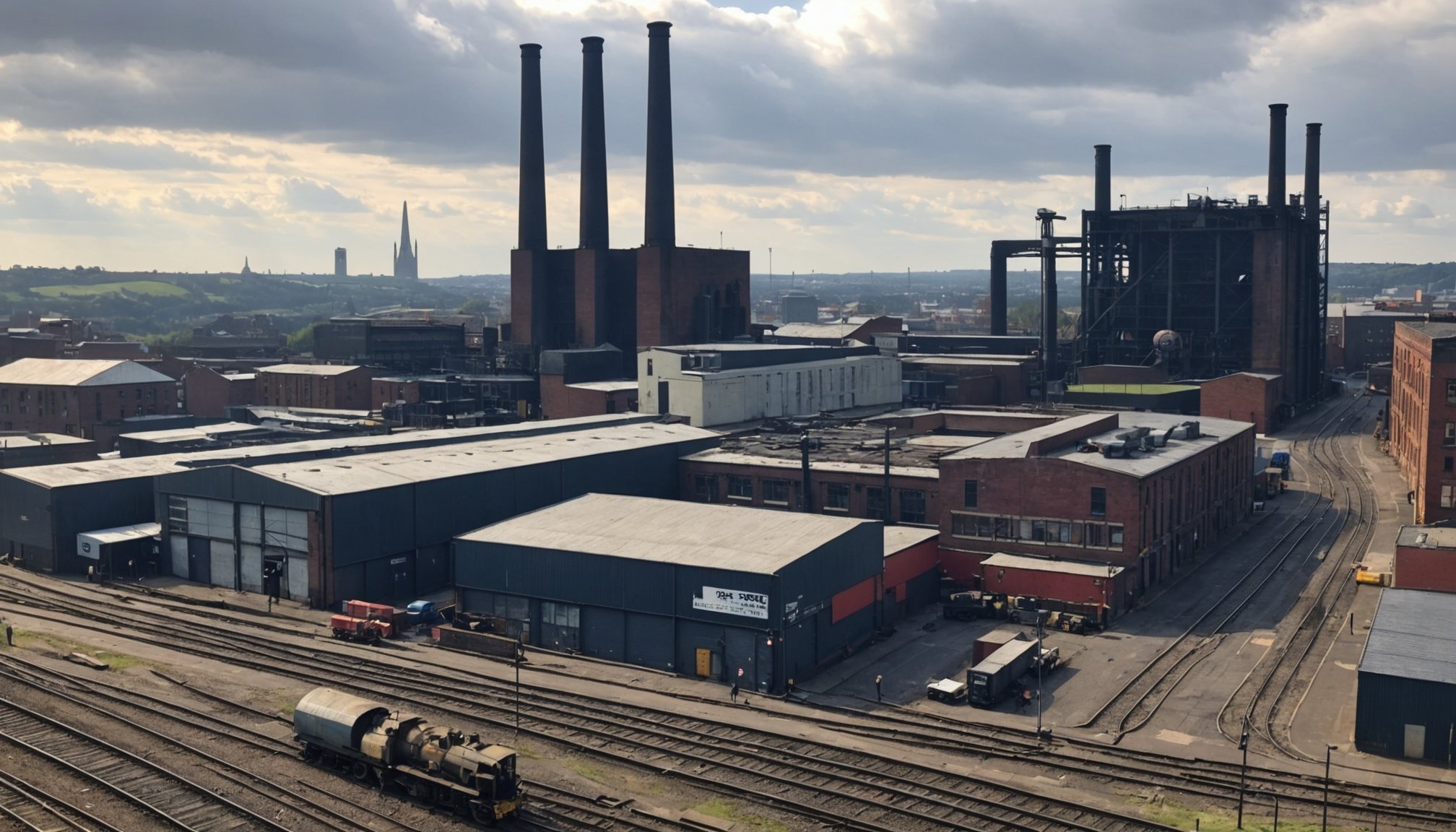Overview of Sheffield’s Steel Industry History
Sheffield’s steel history is a testament to its impressive industrial heritage, significantly impacting both the economy and culture. The origins of Sheffield as a steel powerhouse trace back to the 14th century, when it became renowned for its superior cutlery. The city’s resources, including local iron ore and abundant water power, facilitated its rise. By the 19th century, the industry’s historical significance soared with the invention of crucible steel and stainless steel manufacturing.
Key innovations propelled this growth, notably Benjamin Huntsman’s development of the crucible technique around 1740, which refined the strength and purity of steel. Further advancements, such as the discovery of stainless steel by Harry Brearley in 1913, transformed Sheffield into a global leader in steel production.
Topic to read : Mastering the Perfect Photography Adventure: Snap the Majestic Coastal Cliffs of Dorset
The industrial heritage left by these innovations shaped the steel industry’s influence on Sheffield’s economic and cultural landscape. This steel legacy fostered a robust economy, supported employment, and cultivated a community with rich traditions and pride in craftsmanship. Sheffield’s identity and international reputation remain intertwined with its enduring steel history and technological achievements.
Notable Attractions Related to Sheffield’s Steel Legacy
Exploring Sheffield offers a rich insight into its steel museums and revealing historical landmarks. These industrial attractions perfectly encapsulate the city’s renowned history.
Also to discover : Exploring Sheffield’s Steel Roots: Premier Methods to Uncover Britain’s Industrial Heritage
The Kelham Island Museum
The Kelham Island Museum serves as a tribute to Sheffield’s steel and engineering might. Housing monumental exhibits, it highlights the city’s transition from steel manufacture to modern advancements. The River Don Engine—one of the museum’s flagship attractions—demonstrates the sheer power of Sheffield’s industrial era. To fully embrace the experience, aim to visit during live demonstrations.
Sheffield Industrial Museum
Sheffield Industrial Museum pays homage to the city’s pivotal role. It offers an array of steel-related collections, spotlighting key innovations that punctuate Sheffield’s history. Visitors can delve into interactive displays that both entertain and educate. Consider attending special events for a more enriching exploration.
The Crucible Theatre
Named after Sheffield’s innovation in crucible steel, the Crucible Theatre is a landmark of cultural distinction. Beyond hosting world-class productions, the venue intertwines art with industrial heritage. Attending a performance here offers a unique convergence of history and culture. Be sure to check the schedule for exciting upcoming shows.
Tips for Exploring Sheffield’s Industrial Heritage
Exploring Sheffield’s rich industrial heritage is an inspiring journey through history. For an optimal experience, consider visiting during the spring and autumn months. The temperate climate during these seasons enhances your exploration of both indoor and outdoor industrial attractions.
Visitors are encouraged to follow recommended walking routes to fully appreciate Sheffield’s industrial past. A popular route begins at the Kelham Island Museum, weaving through significant steel-related sites, and concluding at the Crucible Theatre. This walk not only offers insight into historical landmarks but also allows participants to absorb the city’s vibrant culture.
Transportation in Sheffield is an essential aspect of planning your visit to these sites. The city’s tram network provides easy access to key spots, linking together various steel museums and historical locations. Consider purchasing a day pass for unlimited travel, making your exploration more convenient.
To enhance your experience, utilise visual guides and historical imagery available at visitor centres and online resources. These visuals provide a deeper connection to Sheffield’s steel history, guiding you through its monumental industrial achievements. Through careful planning, your journey through Sheffield’s industrial legacy promises to be both enriching and memorable.
Local Events Celebrating Sheffield’s Steel Industry
Sheffield’s lively enthusiasm for its steel heritage is epitomised through various local events. These vibrant gatherings celebrate both the history and industrial achievements of the city’s past.
Annual steel festivals are among the most notable events. Held throughout the year, they feature everything from informative lectures to lively performances showcasing the city’s artisanal steel crafting. Expect to experience a fusion of education and entertainment, with activities tailored for both young and seasoned enthusiasts.
Local culture is significantly enriched by these festivals. Beyond honouring Sheffield steel history, they foster community pride and offer a platform for local artists and historians. Participation allows attendees to connect deeply with the city’s industrial narrative and engage with fellow enthusiasts.
In planning to attend, consider the timing of key celebrations such as the Steel City Festival. Early booking is advised for popular events, given their draw for both locals and tourists. Check local guides for detailed schedules and potential participation opportunities, ensuring a memorable experience intertwined with Sheffield’s enduring industrial legacy.
Engaging Visuals and Maps to Enhance Your Visit
When navigating Sheffield’s industrial attractions, effective use of Sheffield maps can significantly enhance your experience. These maps are particularly helpful in finding and appreciating the city’s vast historical landmarks linked to its steel legacy. Detailed, user-friendly maps are available at visitor centres, guiding you through pivotal steel-related sites with ease.
Historical imagery provides an immersive glance into Sheffield’s past. Capturing the essence of the city’s industrial evolution, these visuals are invaluable in illustrating transformations within the steel industry. They depict moments spanning from the inception of crucible steel to the rise of stainless steel innovation. Such imagery can be found in museums or online archives, augmenting the storytelling of Sheffield’s industrial growth.
Consider using visual guides for a more interactive exploration. These resources often blend maps with historical photography and informative narratives, creating a multimedia experience. They are accessible through local visitor platforms and enhance understanding of key innovations and the city’s esteemed industrial heritage. By relying on these engaging tools, visitors can explore Sheffield’s steel narrative more comprehensively and meaningfully.









